
Learn about the 18th century Castillo de San Juan in the coastal town of Águilas This regular guided tour is held monthly in Águilas, giving visitors a chance to enjoy the spectacular views from the fortress of San Juan de las Águilas which was built in the 18th century. The first known fortification was erected here as a 16th-century defensive fortress to protect against pirate attack, although it is likely that the Romans constructed..
READ MORE

An eco-friendly walking and cycling route at the western end of the Águilas coastline The network of “Senderos Azules” (Blue Trails) is an initiative promoted in Spain by ADEAC, the Association of Environmental and Consumer Education, to recognize and promote sustainable and environmentally friendly walking paths, this contributing to the enjoyment and preservation of nature and ethnographic heritage. The “Los Cocedores” route in Á..
READ MORE
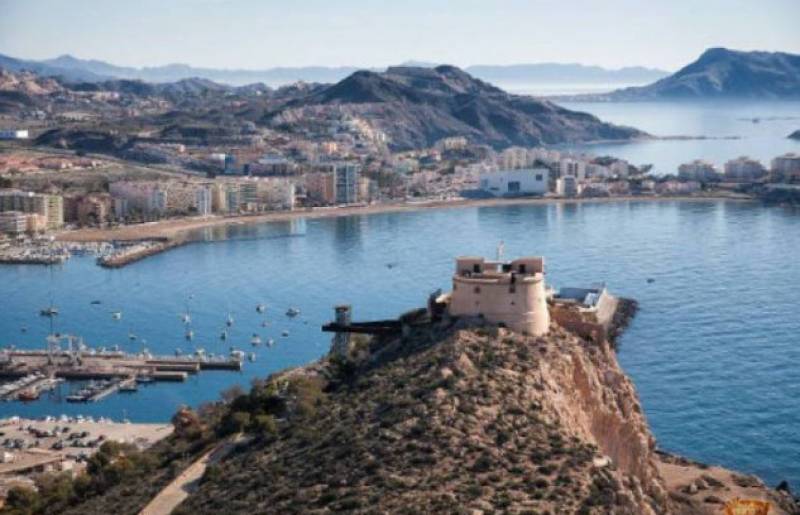
The castle and the Sagrera windmill both offer stunning views, and the CIMAR Aquarium and railway, Hornillo and archaeological museums all offer interesting journeys into the past... The municipality of Águilas offers a number of interesting and enjoyable options either for an enjoyable day trip or for a longer visit, and alongside the extensive beaches and natural areas includes a number of museums and information centres which can be visited..
READ MORE

Where to see animals from whales to eagles in the Region of Murcia! Wild animals are all around is, of course, but so accustomed are we to small insects and birds that we rarely stop to remember that not so far away are some of the most fascinating and impressive of the many species that exist on Planet Earth. It sometimes seems incredible that just a short distance away from our world of tarmac and concrete are majestic beasts which have existed..
READ MORE

Natural rural treasures in Murcia where you can hear the silent call of Nature this winter! As we tread the same paths and visit the same places day by day the Region of Murcia becomes ever more familiar to us, but do you realize how easy it is to stray off the map and lose yourself in the wonders of Nature? Sometimes we really need to disconnect and change our surroundings, get away from the noise and frustrations of everyday life and enjoy..
READ MORE
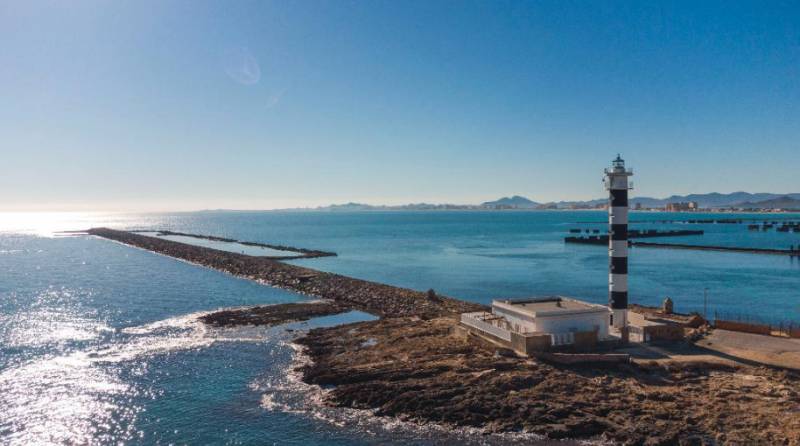
A seafront tour with a difference sheds light on the history of the coastline of Murcia The Faro del Estacio in La Manga del Mar Menor For millennia lighthouses have stood as guardians of the coastline in civilizations all over the world, shepherding seafarers to safety as the look for ways to navigate to port and avoid hidden rocks, and in the Region those which still stand shed light not only on the waves but also on countless old tales..
READ MORE

Where to go to create slightly different memories of a trip to the Costa Cálida! Most visitors know about 3 or 4 of the most popular tourist attractions and beauty spots in the Region of Murcia, with thousands flocking all year round to the Cathedral in the regional capital, the Roman Theatre in Cartagena, the castle of Lorca and of courses the beaches of the Mediterranean and the Mar Menor, but this short list contains a couple of suggestions..
READ MORE

Top viewing points from La Manga del Mar Menor to Águilas Source: ITREM Wherever you go in the Mediterranean, if offered the choice you’ll always opt for a place with a balcony and a sea view, and in the Region of Murcia nature provides a myriad of privileged locations with their own panoramic vistas! Of course, they don’t come equipped with en-suite bathrooms and mini-fridges, but these places are perfect to just stop and contemplate..
READ MORE

A rare stretch of undeveloped Mediterranean coastline with a backdrop of spectacular cliffs and mountain scenery The area of the municipality of Águilas which runs north along the coastline from the imposing headland of Cabo Cope to the boundary with the municipality of Lorca is one which has almost miraculously escaped the attentions of mass property developers over the last 50 years, with regional and national legislation preventing all attempts..
READ MORE

Icy cold springs, moonscapes, badlands and enchanted natural cities in the Costa Cálida! Far from being simply a stretch of coastline in the western Mediterranean, the Region of Murcia has a fantastically varied landscape, and the following selection has been made by the regional tourism institute (ITREM) to illustrate this wealth of natural beauty! Salto del Usero Just outside the town of Bullas is the popular beauty spot of the Salto..
READ MORE

Plenty of desert course opportunities for golfers in the area around Águilas The town of Águilas in the south-west of the Region of Murcia is usually associated first and foremost with the spectacular 28-kilometre coastline and beautiful beaches which run along the shore of the Mediterranean, but among the wide range of other attractions it boasts is a selection of nearby opportunities for golfers to indulge in their favourite sport while taking..
READ MORE

The current lighthouse was built in 1973 to replace one dating from 1860 The lighthouse is featured in Ruta 181, a nationwide route featuring all such structures in Spain The lighthouse of Punta Negra stands on the slope at the foot of the hill which is home to the Castle of San Juan in Águilas, and the tower of 23 metres gives it an altitude of 30.9 metres above sea level. It has been in operation since 1973, with its signal of two white..
READ MORE

An exhibition space devoted to the life and work of actor Paco Rabal, one of Águilas’s favourite sons The Centro de Interpretación Francisco Rabal is a public space created on the first floor of the Casa de la Cultura in Águilas with the general aim of tracing the life story and career of the man after whom it is named. Designed by Javier Esquiva and occupying 159 square metres of floor space, the venue contains displays and objects of..
READ MORE

What to do on a morning out in Águilas Itinerary - Pick up map from tourist office - Visit to the Casino - Coffee in the Plaza de Espana, and maybe a slice of cake... - Visit to the Archaeological museum - Visit to the Castillo de San Juan - Photo opportunity by the Monumento al Ferrocarril - Lunch There is plenty of parking around the Plaza de España and in the surrounding streets, or along the seafront, particularly..
READ MORE

Exhibitions displaying the most extravagant Carnival costumes are housed at the Casa de la Cultura in Águilas, Murcia A new museum dedicated to the famous Águilas Carnival opened on August 10 2021 on the first floor of the Casa de la Cultura Francisco Rabal and is now open to the public. The new Museum increases the cultural attractions on offer in Águilas and is a "must-see" for anyone who enjoys the famous Águilas..
READ MORE

An 11th century fortification in Águilas which was strategically important in the conflicts of the Middle Ages Image: Consejo de Agricultura Ecológica de la Región de Murcia - Caerm The ruined castle of Chuecos stands at an altitude of 687 metres above sea level on a hill in the Sierra de Almenara and was built to protect and make use of a historic natural spring which lies just below. To the north is the Casa de Chuecos and the small church..
READ MORE

The castles of Chuecos and Tébar protected the rural population of Águilas as long ago as the 12th century The castle of Tébar stands at an altitude of 486 metres above sea level on a hill next to the old road between Lorca and Mazarrón (click for map), about 12 kilometres from the town of Águilas, and although the road (now the RM-332) is close by it requires something of a hike to reach it from a small rural track. It is a near total ruin..
READ MORE

Museo y Centro de Difusión del Esparto Esparto grass was one of the pillars of the local economy in Águilas for centuries. A new museum opened in Águilas during December 2019 focusing on the importance of esparto grass growing and weaving in the economy of the town in the past, occupying part of the interior of the Molino de Sagrera windmill which looks out over the bay from the hill in the old town centre. The growth of Águilas..
READ MORE

A monument to British railway engineering on the coastline of Murcia (Click for the full history of Águilas) The "British Great South Eastern Spain Railway Company" built the "Lorca-Almendricos-Águilas" railway line between 1887 and 1896 in order to transport minerals, principally, iron, from the Sierra de los Filambres in Granada to the coast, and in 1901 work began to construct a purpose-built loading dock in order..
READ MORE

El Ícaro is the work of sculptor González Beltrán This monument can be viewed on the seafront close to the fishing port of Águilas and is the work of Murcia sculptor González Beltrán. The statue is a homage to the most important fiesta in Águilas, its spring Carnival, which was awarded the status of “International Tourist attraction” in 2015 and continues to draw thousands of visitors every year. Click for full information about..
READ MORE

A small museum shows the remains of one of two Roman baths complexes in Águilas The Roman baths or “Termas Occidentales” in Águilas date from the 1st century AD, and were first excavated in the late 18th century by Manuel Robles Vives, the abbot at the Collegiate Church of San Patricio in Lorca. The underground remains of the “caldarium” (warm bath room) can be visited, along with a small exhibition alongside. A second Roman bath..
READ MORE

Four beaches and a fascinating array of flora and fauna on a short coastal walk in Águilas Details of the SL-MU 18 Cuatro Calas walk Start and finish: Playa de Calarreona Distance: 4 kilometres including detours, 2.8 km without detours Duration: 60 minutes for the circular route, 90 minutes including detours Total ascent and descent: 130 metres The SL-MU 18 “Cuatro Calas” footpath follows a route which is entirely within..
READ MORE

Attractive views over the Bahía de Levante in Águilas The path up to the Pico del Aguilica rock at the eastern end of the Bahía de Levante in Águilas is the logical end to a walk along the seafront, and provides attractive views back over the town centre, the castle and the beaches of this area. The spot takes its name from the rock formation in which many people see a similarity to the beak of an eagle, although as far as we know..
READ MORE

The restored windmill in Águilas is part of a tour through the old fishermen’s quarter The Molino Sagrera is a restored windmill in the heart of the old town of Águilas, serving not only as a reminder of the past, when such buildings were common in this area, but also as an interesting stop-off point on a walk around the narrow hillside streets of this part of the town. In fact, it is on one of the routes recommended by the Águilas tourist..
READ MORE

The Ermita de Cope was used by shepherds and fishermen in past centuries One of the most curious places to visit in Águilas is the Ermita de Cope, a tiny chapel which lies mostly in ruins close to the 16th century watchtower of the Torre de Cope. The evidence available suggests that the chapel existed as long ago as the 16th century, when the watchtower was built, and it was most likely used by the shepherds and fishermen who supplied..
READ MORE

The Torre de Cope was used until the 19th century to defend the Águilas coast The Torre de Cope is a 16th-century watchtower on the low ground beneath the headland of Cabo Cope in the east of the municipality of Águilas, and was originally one of those built in order to provide advance warning to local inhabitants of imminent raids by the Berbers who lived in the northern coastal regions of Africa. The raiders from Africa were largely..
READ MORE

A free entry museum to the sea and a great place to take the kids The CIMAR (Centro de Interpretación del Mar) centre in Águilas was opened in the spring of 2014 as part of a campaign to promote the attractions of the town through its historical and current links with the sea and with fishing, and proved an instant success with both locals and visitors to the Costa Cálida. It is a welcome addition to the list of potential visits and activities..
READ MORE

A short climb for panoramic views over the landscape of Águilas Just a ten-minute drive from the town of Águilas, in the heart of the crop fields which lie in the east of the municipality behind Cabo Cope, is the rural community of El Garrobillo, which consists mainly of farmland and is home to very few people. Much of the area known as Garrobillo actually lies in the municipality of Lorca, but the church and the unusual steps climbing up..
READ MORE

This rocky island was a Roman production point for Garum fish sauce One of the most characteristic views of Águilas is out across the bay of “El Hornillo”, to the Isla del Fraile, a small rocky island covering a total area of 6.3 hectares, which lies just off the eastern coastline of the main urban town. The island can only be reached by swimming or the use of a small boat, although great care should be exercised if attempting to..
READ MORE
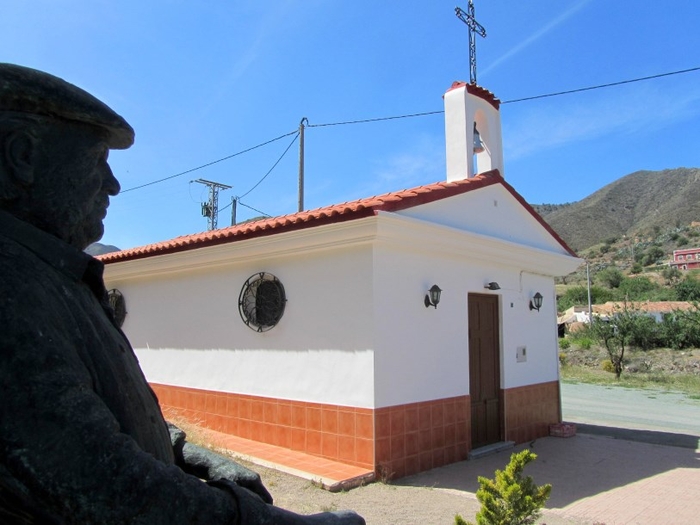
A pleasant trip out to the mountains behind Calabardina Cuesta de Gos is a tiny hamlet in the foothills of the mountains behind Águilas and Calabardina, and consists of no more than a scattering of around a dozen houses. The inhabitants of the village used to struggle to make their living from the few crops which could be grown in the arid countryside before irrigation was viable, but nowadays the houses belong mostly to a few families who..
READ MORE

A very visible reminder of the industrial past of Águilas When the town of Águilas grew in importance in the early nineteenth century it was principally as a result of the mining activity further inland, when rich deposits of iron, lead, silver and other substances were extracted from the hillsides of Almería and Lorca. In 1838 a seam of silver was discovered in the hills of the Sierra de la Almagrera, and soon the silver mines were..
READ MORE

The current fishing port of Águilas dates back to 1884 The port of Águilas is home to one of the largest fishing fleets in the Region of Murcia, and has been open in more or less its present form since 1884, when it was one of the sparks which led to the resurgence of trade in the town. In addition, since June 2016 it has been home to a permanent exhibition illustrating the history of fishing in Águilas, a sector which for long..
READ MORE

The mill dates back to the 1870s and was restored in 2013 The Molino de los Alacranes is one of two old windmills in the town of Águilas which have been restored and endowed with viewing points in recent years (the other being the Molino de Sagrera), after restoration including the replacement of the sail and the creation of easier access was completed in 2013. The licence for the construction of the building was granted on 27th July..
READ MORE

Águilas Sporting Club was one of the first in Spain and dominated the sport in Murcia for 20 years The town of Águilas is not immediately associated with footballing success, but in fact it has one of the oldest traditions in the whole of Spain in the sport, the first club having been founded here by members of the British mining and railway construction community in the 1890s. It was 1896 when Sporting Club Aguileño (or Águilas Sporting..
READ MORE

A 16th century defensive fortress built to warn of pirate raiders from northern Africa The Castillo de San Juan in Águilas is high above the town, originally erected as a 16th century defensive fortress to protect against pirate attack and is well worth a visit, offering impressive views across the surrounding countryside and the town below. The castle can be visited as an attraction on its own or can form part of a morning out visiting the..
READ MORE
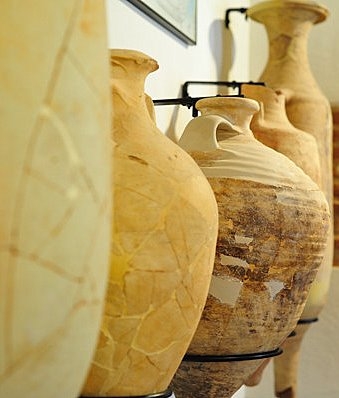
The Águilas Archaeological Museum The Museo Arqueológico de Águilas contains a collection of artefacts relating to the history of the municipality, with representative displays relating to each of the important phases and cultures which settled in this coastal location. Click to read the History of Águilas Prehistory Águilas has been inhabited for approximately 5000 years, with several sites showing prehistoric settlements, amongst..
READ MORE

El Museo del Ferrocarril, Águilas The Railway Museum of Águilas was opened in 1985 by the “El Labradorcico” railway enthusiasts club, and is housed on the lower floor of the railway station in the town. The premises was formerly occupied at the end of the 19th century by “The Great Southern Spain Railway Company”, who used them as an archive and maintained their vast strongbox here. The reinforced iron door which protected the safe..
READ MORE
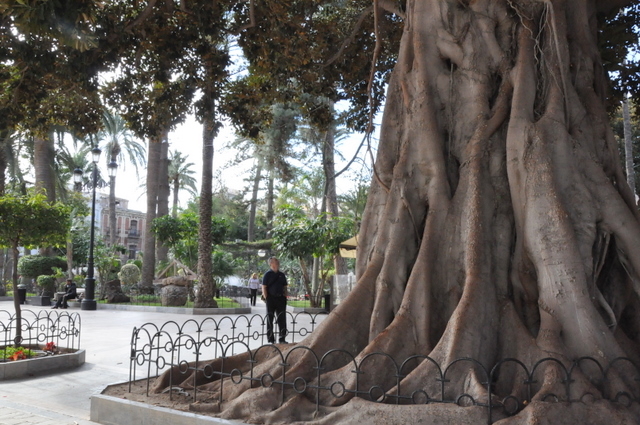
The Plaza de España in Águilas is a community focal point and a great place to enjoy a coffee. The Plaza de España in Águilas is one of the most important open spaces in the town and is a focal point for many of the events and celebrations which take place in the town throughout the year, as well as being a lovely place to enjoy a cup of coffee in the open air. The central area of the Plaza is occupied by greenery, paths and fountains..
READ MORE

The Casino in Águilas Águilas Casino was built between 1894 and 1895, and is one of the few remaining examples of historical Casinos in the Region of Murcia. Casinos were, essentially, private clubs, built so that the bourgeoise society of the area had a location for dances, recitals and social meetings. Members of the association which used the Casino, mainly came from families who owned the mining exploitations in the Lorca area, although..
READ MORE
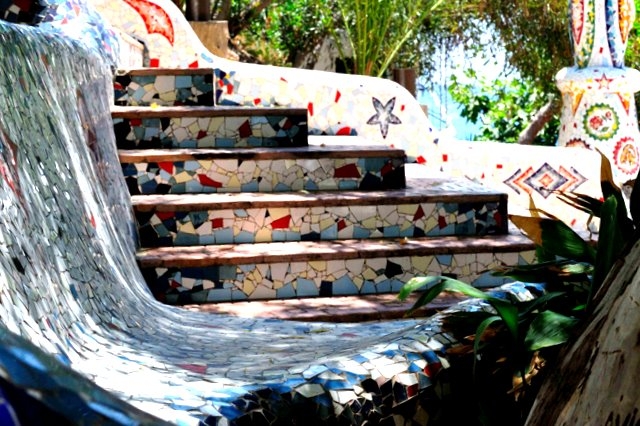
One of the most beautiful places in Águilas to enjoy a summer drink Rincon del Hornillo, Águilas This little corner of Águilas is inspirational to gardeners with gardens of all sizes, right through from those with just a little patio to maintain, to those looking at vast expanses of uncultivated wasteland and wondering what to do with them. The Rincon del Hornillo sits in a corner near the CIMAR centre, behind the El Hornillo beach in..
READ MORE